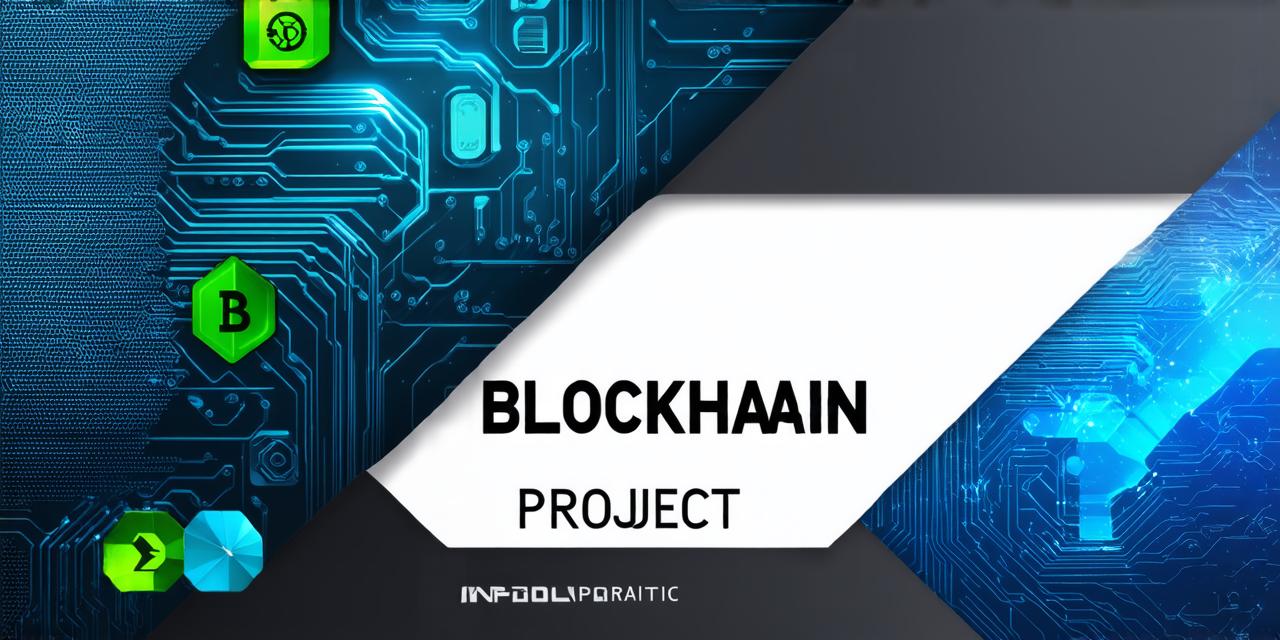1. Define Your Project’s Purpose
Before diving into technical details, it is crucial to define your blockchain project’s purpose. What problem does it solve? Who is the target audience? What are the key features and functionalities? Answering these questions will help you create a clear project plan and determine the necessary resources and expertise.
1. Choose the Right Blockchain Platform
There are several blockchain platforms available, each with its unique features and capabilities. Some popular options include Ethereum, Hyperledger, Corda, and EOS. Each platform has its own programming language, consensus mechanism, and smart contract capabilities. Therefore, it is essential to choose the right platform that aligns with your project’s requirements.
1. Design Your Blockchain Architecture
Once you have chosen the blockchain platform, it’s time to design your blockchain architecture. This includes defining the network topology, consensus mechanism, smart contract structure, and data storage. The architecture should be scalable, secure, and efficient. It is also essential to consider the potential use cases and performance requirements.
1. Develop Your Smart Contracts
Smart contracts are self-executing programs that run on the blockchain. They enable automated transactions and enforce business logic. Therefore, it is crucial to develop smart contracts that align with your project’s purpose and architecture. You can use programming languages like Solidity, Vyper, or Java to write smart contracts for your chosen platform.
1. Test Your Blockchain Network
Testing your blockchain network is a critical step in the development process. It involves identifying potential vulnerabilities, performance issues, and usability problems. You can use automated testing tools or manual testing techniques like fuzz testing, penetration testing, and stress testing to ensure that your blockchain network meets the required standards.
1. Deploy Your Blockchain Network
Deploying your blockchain network involves setting up the infrastructure, configuring the nodes, and launching the network. You can deploy your blockchain network on-premises or on a cloud platform like AWS, Azure, or Google Cloud. It is essential to ensure that your network has adequate security measures in place, such as firewalls, encryption, and access controls.
1. Maintain Your Blockchain Network
Maintaining your blockchain network involves regular updates, bug fixes, and security patches. It also requires monitoring the network’s performance, managing user accounts, and addressing any issues that arise. You can use tools like Nagios, Zabbix, or New Relic to monitor your blockchain network’s health and identify potential problems.
1. Case Study: Creating a Supply Chain Blockchain
1. Define Your Project’s Purpose
: The purpose of this project is to improve food traceability, reduce food waste, and enhance consumer trust in the supply chain.
2. Choose the Right Blockchain Platform:
Ethereum is an excellent platform for creating a supply chain blockchain due to its smart contract capabilities and large developer community.
3. Design Your Blockchain Architecture:
The architecture of this blockchain should include a decentralized network of nodes, smart contracts that track product movement, and data storage that enables transparency and traceability.
4. Develop Your Smart Contracts:
You can use Solidity to write smart contracts that enable automated tracking of food products and enforce business logic.

5. Test Your Blockchain Network:
Automated testing tools like Truffle and Remix can be used to test the smart contracts and identify potential vulnerabilities. Manual testing techniques like fuzz testing can be used to identify performance issues.
6. Deploy Your Blockchain Network:
You can deploy this blockchain network on-premises or on a cloud platform like AWS or Google Cloud.
7. Maintain Your Blockchain Network:
Regular updates, bug fixes, and security patches are necessary to maintain the integrity and availability of the blockchain network.
FAQs
1. What is the difference between public and private blockchains?
Public blockchains are open to anyone, while private blockchains are restricted to a specific group of users.
